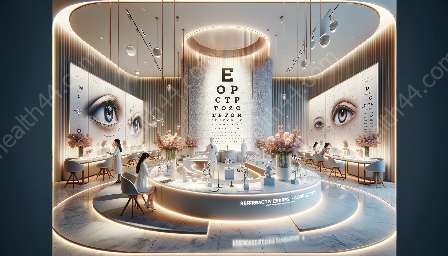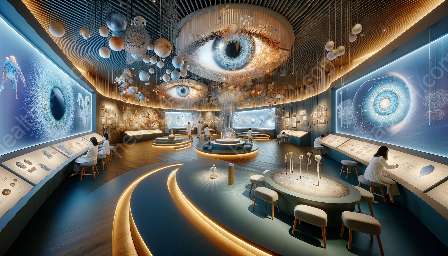Color vision is an essential aspect of our perception that not only adds vibrancy to our lives, but also plays a crucial role in vision care and overall health.
The Science of Color Vision
Color vision is made possible by the specialized cells in our eyes called cones, which are sensitive to different wavelengths of light. These cones are responsible for the perception of color and are concentrated in a small area of the retina called the fovea.
The human eye contains three types of cones, each sensitive to a different range of wavelengths: red, green, and blue. The brain processes the signals from these cones, allowing us to perceive a wide spectrum of colors.
Color Perception and the Environment
Color vision not only allows us to appreciate the beauty of our surroundings, but it also helps us navigate and make sense of the world. For instance, traffic lights, warning signs, and color-coded information all rely on our ability to perceive and interpret colors accurately.
Additionally, color vision has cultural and emotional significance. Different cultures associate various colors with specific meanings and emotions, making color perception deeply intertwined with human experience.
Impact on Vision Care
Color vision plays a significant role in vision care, as it can provide insights into various eye conditions and overall eye health. One common test to evaluate color vision is the Ishihara color test, which uses plates with concealed numbers or patterns that can only be seen by individuals with normal color vision. This test is often used to diagnose color blindness and other vision-related issues.
Furthermore, certain eye diseases, such as age-related macular degeneration and diabetic retinopathy, can affect color vision. Changes in color perception may indicate the progression of these conditions, serving as an important diagnostic tool in the field of vision care.
Color Vision and Overall Health
Beyond vision care, color vision is also linked to overall health. Studies have suggested that colors can influence mood, energy levels, and even appetite. For example, exposure to natural greenery and blue hues has been associated with reduced stress and improved well-being.
Moreover, color therapy, known as chromotherapy, is an alternative healing method that utilizes different colors to promote physical and emotional wellness. While scientific evidence supporting its effectiveness is limited, it reflects the belief in the profound connection between color and health.
Embracing Color Vision for a Healthy Lifestyle
Understanding the significance of color vision allows individuals to make informed choices for maintaining both healthy vision and overall well-being. This includes paying attention to color-rich diets that provide essential nutrients for eye health and embracing environments that offer a diverse range of colors for visual stimulation and emotional balance.
By recognizing the impact of color vision on vision care and health, individuals can take proactive steps towards preserving their eyesight and enriching their lives with the beauty of the visual spectrum.


































